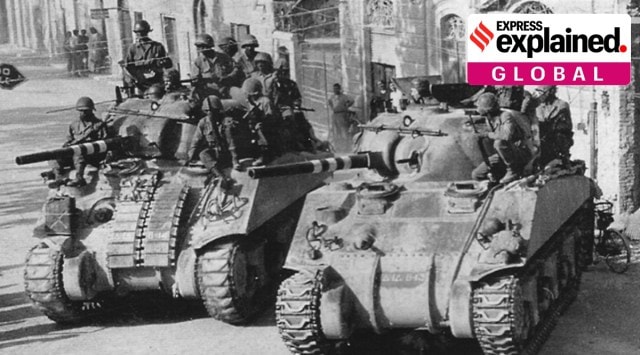Explained: What is the Indian Army Memorial in Italy that COAS Naravane will inaugurate this week?
While millions of Indians participated in the two World Wars, their efforts are not always recognised.
 The UK's National Army Museum notes that for two years during WWII, Italy became one of the war’s most “exhausting campaigns” because they were facing a skilled and resolute enemy | Representational image/Wikimedia Commons
The UK's National Army Museum notes that for two years during WWII, Italy became one of the war’s most “exhausting campaigns” because they were facing a skilled and resolute enemy | Representational image/Wikimedia CommonsDuring his four-day visit to the UK and Italy, Indian Army Chief Manoj Naravane will inaugurate the Indian Army Memorial at Cassino in Italy, about 140 km away from Rome.
The memorial commemorates over 3,100 Commonwealth servicemen who took part in the effort to liberate Italy in World War II. Apart from this, 900 Indian soldiers were also commemorated on this memorial.
What was happening in Italy in WWII?
Under Benito Mussolini, Italy had joined Nazi Germany in 1936 and in 1940 it entered WWII (1939-1945) against the Allies. But in 1943, Mussolini was overthrown and instead, Italy declared war on Germany. The invasion of Italy by the Allies coincided with an armistice that was made with the Italians. Even so, the UK’s National Army Museum notes that for two years during WWII, Italy became one of the war’s most “exhausting campaigns” because they were facing a skilled and resolute enemy.
What was India’s involvement in World War II?
 In the first half of the 1940s, India was still under the British rule and the Indian Army fought in both the world wars. It comprised both Indian and European soldiers. Apart from this, there was the East India Company Army that also recruited both Indian and European soldiers and the British Army, which was also present in India.
In the first half of the 1940s, India was still under the British rule and the Indian Army fought in both the world wars. It comprised both Indian and European soldiers. Apart from this, there was the East India Company Army that also recruited both Indian and European soldiers and the British Army, which was also present in India.
In his book “Indian Army in World War II”, Kaushik Roy notes that the Indian Army was the largest volunteer force during WWII, with over 2.5 million (more than 20 lakh) Indians participating. These troops fought the Axis powers (Germany, Italy and Japan) as part of the Allies. By 1945, the Allies had won, Italy had been liberated, Adolf Hitler was dead and India was barely a couple years short of independence.
However, while millions of Indians participated, their efforts are not always recognised. In an article for the BBC, historian Yasmin Khan said in 2015 that while the war years changed South Asia “dramatically”, “this part of the British Empire’s history is only just emerging”. Khan was questioning why India’s involvement and contribution to the war was ignored so far.
The website called “British Military History” notes that three infantry divisions of the Indian Army took part in the Italian campaign. These were the 4th, 8th and 10th Indian Divisions. The first one to land in the country was the 8 Indian Infantry Division that saw action in Iraq and Iran when the British invaded these countries in 1941. The second one arrived was the 4 Indian Division that came to Italy from North Africa in December 1943. In 1944, it was deployed in Cassino. The third, which is the 10 Indian Division, was formed in 1941 in Ahmednagar and moved to Italy in 1944.
“In addition, it has to be noted how the men from the Punjab, and Indian plains, coped with the extremely hostile conditions experienced in Italy. Even the Gurkhas from Nepal struggled with the heavy and persistent rain, and freezing nights in the Italian mountains. All three Divisions performed well in the Italian Campaign and were highly respected by the Allied and Axis commanders alike,” the website notes.
- 01
- 02
- 03
- 04
- 05






































